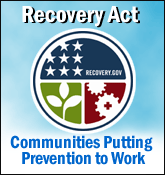Arthritis
Meeting the Challenge of Living Well
At A Glance 2012

On this Page
Arthritis: The Nation's Most Common Cause of Disability
What Is Arthritis?
Arthritis comprises more than 100 different rheumatic diseases and conditions, the most common of which is osteoarthritis. Other frequently occurring forms of arthritis include rheumatoid arthritis, lupus, fibromyalgia, and gout. Common symptoms include pain, aching, stiffness, and swelling in or around the joints. Some forms of arthritis, such as rheumatoid arthritis and lupus, can affect multiple organs and cause widespread symptoms. Although arthritis is more common among adults aged 65 years or older, people of all ages (including children) can be affected. Nearly two-thirds of people with arthritis are younger than age 65 years. Arthritis is more common among women (24.3%) than men (18.7%) in every age group, and it affects members of all racial and ethnic groups. Arthritis is also more common among adults who are obese than among those who are normal weight or underweight.
Why Is Arthritis a Public Health Problem?
High prevalence. An estimated 50 million U.S. adults (about 1 of 5) report doctor-diagnosed arthritis. As the U.S. population ages, the number of adults with arthritis is expected to increase sharply to 67 million by 2030, and more than one-third of these adults will have limited activity as a result. In addition, research indicates that some form of arthritis or other rheumatic condition affects 1 of every 250 children.
"Arthritis is one of the conditions identified in the report Living Well with Chronic Illness: A Call for Public Health Action, with notable implications for the nation's health and economy. It is an important and continuing challenge to public health."
Chair, Institute of Medicine report Living Well with
Chronic Illness: A Call for Public Health Action
Common disability. Arthritis is the nation's most common cause of disability, limiting the activities of 21 million Americans and causing 1 of 3 working-age adults (aged 18–65 years) to report work limitations.
High lifetime risk. One community study estimates that the lifetime risk of developing knee osteoarthritis serious enough to cause painful symptoms is 45%. Risk increases to 57% among people with a past knee injury. Lifetime risk for knee osteoarthritis goes up to 60% among people who are obese.
High costs. In 2003, the total cost of arthritis was $128 billion, including $81 billion in direct costs (medical) and $47 billion in indirect costs (lost earnings). Each year, arthritis results in 992,100 hospitalizations and 44 million outpatient visits.
Contributor to multiple chronic conditions. Among U.S. adults with arthritis, 47% also have at least one other disease or condition, including 35% who are obese (compared with only 21% of people without arthritis). In addition, more than half of adults with heart disease (57%) or diabetes (52%) and more than one-third with obesity (36%) also have arthritis.
Special barriers to physical activity. Research shows that people with arthritis face barriers to physical activity—such as pain or fear of pain, fear of worsening symptoms or damaging joints, and lack of information on how to exercise safely—that keep them from being physically active. Nearly 44% of adults with arthritis report no leisure-time physical activity (compared with about 36% of adults without arthritis). Not being physically active is a risk factor for other chronic diseases (e.g., heart disease, diabetes, obesity) and interferes with management of these conditions. People with arthritis need to know how to overcome barriers to physical activity.
What Can Be Done to Address Arthritis?
Learn techniques to manage arthritis. Self-management education interventions such as the Arthritis Self-Management Program can teach people how to manage arthritis and lessen its effects. In multiple studies, this intervention was consistently found to improve people's health by reducing depression, fatigue, and health distress. Although these types of programs are effective, they are not available to everyone who needs them. More widespread use of this intervention and similar courses, such as the Chronic Disease Self-Management Program, which addresses arthritis along with other chronic diseases, will improve quality of life for people with arthritis.
Be physically active. For people with arthritis, physical activities such as walking, bicycling, and swimming have been shown to have significant benefits, including reducing pain and improving physical function, mental health, and quality of life. The Walk with Ease Program, the Arthritis Foundation Exercise Program, and the Senior Services EnhanceFitness® program are three examples of community exercise interventions that have been shown to improve health among participants.
Maintain a healthy weight and protect your joints. Weight control and injury prevention measures can lower a person's risk of developing osteoarthritis. Weight loss also can reduce symptoms for overweight or obese people with knee osteoarthritis.
Consult a physician. Early diagnosis and appropriate management are especially important for people with inflammatory arthritis. Consulting with a physician is also important because recommendations from health care providers are the most influential factor in convincing people to be physically active and to take an arthritis self-management course.
CDC's Response
CDC is committed to leading strategic public health efforts to promote well-being, prevent chronic disease, and achieve health equity. With $13 million in FY 2012 funding, CDC is working with the Arthritis Foundation, the National Association of Chronic Disease Directors (NACDD), state arthritis program directors, and other partners to improve quality of life for adults with arthritis. These efforts are based on strategies in the National Arthritis Action Plan: A Public Health Strategy (NAAP) and recommendations from A National Public Health Agenda for Osteoarthritis (OA Agenda).
By carrying out the strategies and recommendations of the NAAP and the OA Agenda, CDC and its partners are moving toward achieving the national goal of decreasing arthritis-related pain and disability and improving function.
Activities Supported by CDC's Arthritis Program
The primary goal of CDC's Arthritis Program is to improve quality of life for people affected by arthritis. The program achieves this goal by supporting the following five key activities:
-
Supporting state health department efforts.
Through cooperative agreements with CDC, state health departments have worked with partners to improve the states' ability to monitor arthritis burden, promote arthritis-control messages, and expand the reach of evidence-based interventions by making them part of existing health care delivery systems.
In mid-2012, CDC will end a 4-year cooperative agreement that awarded 12 states an average of $500,000 a year to use innovative, system-based strategies and communication approaches to reach adults with evidence-based arthritis interventions. Building on the successes and lessons learned, a new 5-year cooperative agreement will be awarded to 10–18 states to expand the access, availability, and use of arthritis interventions. CDC also continues to work with the NACDD to support the Arthritis Council, a forum for managers and staff of state arthritis programs and projects who are interested in building state capacity to address arthritis. -
Collaborating to make policy and system changes.
CDC is a sponsor and member of the Osteoarthritis Action Alliance, a national coalition created with the Arthritis Foundation to promote and respond to the goals and recommendations of the OA Agenda. CDC, the Arthritis Foundation, and nearly 40 partner organizations are working together to reduce the burden of osteoarthritis through strategies that address self-management education, physical activity, injury prevention, and weight management.
CDC's epidemiology and surveillance efforts continue to include the collection of data useful to policy and decision makers. Examples include cost estimates and data on arthritis-attributable work limitations at state and national levels and data on the occurrence of arthritis among people with diabetes and heart disease. Future CDC and state efforts will include examining these data as starting points for policy changes. -
Reaching the public.
State health departments and Arthritis Foundation chapters have implemented two CDC-developed health communication campaigns that promote physical activity among people with arthritis. "Physical Activity. The Arthritis Pain Reliever." focuses on whites and blacks aged 45–70 years, while Buenos Días, Artritis is designed to reach Spanish-speaking Hispanic adults. Each state arthritis program and several Arthritis Foundation chapters have run at least one of these campaigns in their state.
With support from CDC and the NACDD, the YMCA successfully completed a pilot project offering EnhanceFitness® in 16 locations in 8 states in 2011. This physical activity intervention has been proven to help people with arthritis increase their strength and endurance. In 2012, this project will move to Phase 2 to help expand EnhanceFitness® across the country through the YMCA. - Improving the science base.
CDC supports research to learn more about arthritis and effective management strategies. For example,
CDC continues to support extramural research to evaluate new physical activity programs for adults with arthritis. The agency is currently funding research at the University of South Carolina's Prevention Research Center to evaluate the First Step for Active Health® program, a self-directed program that uses a step-by-step approach to increase aerobic, resistance, balance, and flexibility activities to improve function and overall health.
An analysis of the Arthritis Self-Management Program and the Chronic Disease Self-Management Program that combined results across multiple studies documented persistent improvements in quality of life. These findings will help clinical and public health practitioners and policy makers make decisions about the value of implementing these types of interventions.
Systemic lupus erythematosus (lupus) is an autoimmune inflammatory disease that affects multiple systems in the body. It can be difficult to diagnose, and prevalence estimates vary widely. CDC is supporting researchers at four universities and the Indian Health Service, through their respective health departments, to produce better estimates of lupus incidence and prevalence for blacks, whites, Hispanics/Latinos, Asians, and American Indians/Alaska Natives in the United States.
- Measuring the burden of arthritis.
CDC uses surveys such as the Behavioral Risk Factor Surveillance System and the National Health Interview Survey to define the burden of arthritis, monitor trends, and assess how arthritis affects quality of life. Research has shown that arthritis can be a barrier to physical activity among people with diabetes, heart disease, or obesity. More research is needed to find effective ways to improve the health of people with multiple conditions.
Future Directions
CDC will continue to work with its partners to expand the availability of arthritis programs and help state programs foster policy, system, and environmental changes designed to bring public health interventions to more people who need them. CDC also is working to develop innovative interventions to reach diverse populations.
For more
information, please contact the
Centers for Disease Control and Prevention
National Center for Chronic Disease Prevention and Health Promotion
4770 Buford Highway NE, Mail Stop K-51, Atlanta, GA 30341-3717
Telephone: 800-CDC-INFO (232-4636) • TTY: 888-232-6348
E-mail:
cdcinfo@cdc.gov • Web: http://www.cdc.gov/arthritis
Contact Us:
- Centers for Disease Control and Prevention
National Center for Chronic Disease Prevention and Health Promotion (NCCDPHP)
4770 Buford Hwy, NE
MS K-40
Atlanta, GA 30341-3717 - 800-CDC-INFO
(800-232-4636)
TTY: (888) 232-6348
8am-8pm ET
Monday-Friday
Closed Holidays - Contact NCCDPHP





